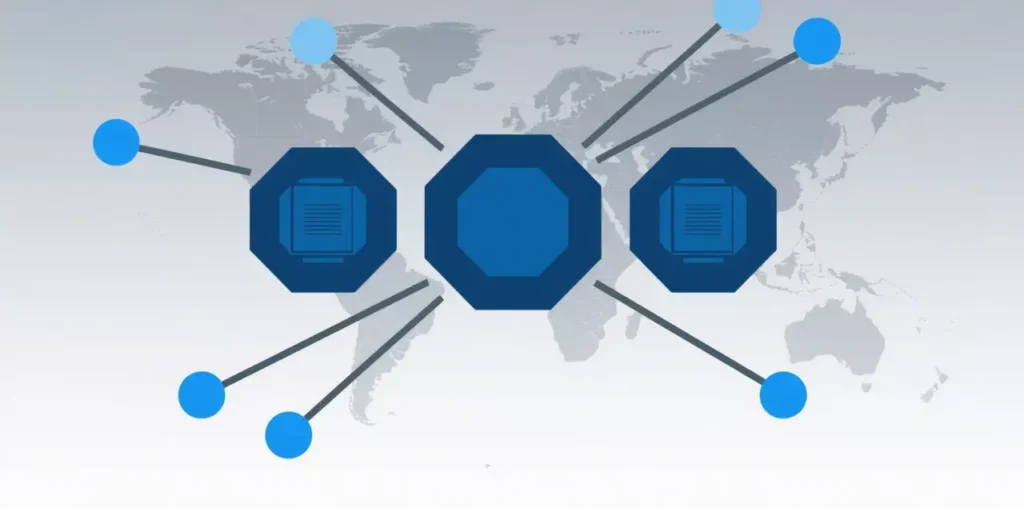LimeTorrents serves as a prominent index in the world of peer-to-peer (P2P) file sharing, aggregating metadata for a wide array of digital content without hosting the files themselves. This platform operates on the BitTorrent protocol, a decentralized system that fragments large files into smaller, verifiable pieces, allowing users to download from multiple sources simultaneously—much like how a swarm of bees collectively gathers nectar from dispersed flowers to optimize efficiency. Scientifically, this process draws from distributed computing principles, where nodes in a network collaborate to reduce bandwidth strain and enhance resilience against single-point failures. By providing search functionality for torrents across categories like movies, software, and music, LimeTorrents exemplifies how algorithmic indexing can democratize access to information in an interconnected digital ecosystem.
From a network science perspective, LimeTorrents embodies graph theory, with users forming a dynamic graph where edges represent data transfers, and nodes adjust based on availability to maintain connectivity. Launched in 2009, the site has endured numerous challenges, including domain blocks and legal pressures, yet continues to adapt through community-driven innovations. In 2025, as data volumes explode with the rise of high-definition content, understanding LimeTorrents not only reveals technological ingenuity but also underscores the balance between open sharing and intellectual property ethics. This tutorial-style article delves into the foundational mechanics, practical usage, and access strategies, offering structured guidance to explore this system knowledgeably while promoting responsible practices.

The Fundamentals of Torrent Systems and LimeTorrents’ Architecture
At the heart of LimeTorrents lies the BitTorrent protocol, a framework that revolutionizes file distribution by leveraging collective user resources. Scientifically, BitTorrent employs cryptographic hashing—algorithms like SHA-1—to create unique fingerprints for file pieces, ensuring integrity during transfers and preventing errors akin to DNA replication checks in biology. Users download a small .torrent file or magnet link from LimeTorrents, which contains metadata such as tracker URLs (coordinators for peer discovery) and piece hashes, without the actual content.
LimeTorrents itself acts as a search engine, indexing user-uploaded torrents into categorized databases, facilitating quick queries through efficient algorithms. This decentralized model minimizes server costs and enhances scalability, as the burden of data transfer shifts to the P2P swarm—a self-organizing network where seeders (complete file holders) and leechers (partial downloaders) interact via tit-for-tat incentives, rewarding upload contributions with faster downloads. However, accessibility issues arise from ISP blocks and geo-restrictions, often enforced through deep packet inspection (DPI), where traffic patterns are analyzed to identify torrent activity, prompting the need for adaptive access methods.
Historical Evolution: LimeTorrents’ Resilience Amid Challenges
LimeTorrents debuted in 2009 as a user-friendly torrent index, quickly gaining traction for its clean interface and verified uploads. By the 2010s, it faced increasing regulatory pressure, with domains blocked in countries like the UK and India due to copyright concerns, reflecting global tensions over digital rights. Despite these setbacks, the platform’s community has sustained it through mirrors—replicated sites on new domains—and proxies that reroute traffic to evade filters.
In 2025, LimeTorrents continues to evolve, incorporating features like enhanced search algorithms for better relevance, adapting to anti-piracy technologies such as automated takedown notices. This resilience mirrors evolutionary biology, where species develop traits to survive environmental pressures, ensuring the ecosystem’s persistence in a regulated digital landscape.
How LimeTorrents Works: A Step-by-Step Mechanism
Engaging with LimeTorrents involves a systematic process that highlights key elements of P2P networking. This tutorial breaks it down, treating it as a guided experiment in data flow dynamics.
1.Query and Discovery: Users search for content on the site, with algorithms ranking results based on factors like seeders and file size—metrics that indicate download viability, similar to how search engines use relevance scores in information retrieval theory.
2.Metadata Retrieval: Selecting a torrent fetches a .torrent file or magnet link, a compact packet of instructions containing hashes and tracker details, enabling the client to locate peers without direct file transfer from the site.
3.Swarm Connection: A torrent client connects to trackers or uses distributed hash tables (DHTs) for peer discovery, establishing TCP links to form the swarm—a network graph where nodes exchange pieces.
4.Piece Download and Assembly: Files are downloaded in parallel from multiple peers, with each piece verified via hashing; mismatches prompt redownloads, ensuring error-free reconstruction through fault-tolerant design.
5.Seeding and Completion: Once assembled, users seed the file, contributing to the swarm’s health and perpetuating the cycle, with upload/download ratios optimizing overall efficiency.
This workflow exemplifies parallel processing, where distributed efforts achieve speeds far exceeding traditional downloads, as demonstrated in network performance studies.
Recommended LimeTorrents Proxies and Mirrors: Ensuring Access
Given frequent blocks, proxies and mirrors provide essential alternates for LimeTorrents. Based on current assessments in 2025, several working options include:
limetorrentz.to: A high-speed mirror with updated content libraries.
limetorrents.bz: Offers reliable access with minimal ads.
limetorrents.unblockit.link: Focuses on unblocking features for restricted regions.
limetorrents.club: A stable replica emphasizing user-friendly navigation.
limetorrents.asia: Tailored for Asian users with optimized servers.
limetorrents.zone: Provides comprehensive category searches with verified torrents.
These proxies reroute traffic to mimic direct access, reducing detection risks through IP substitution. Performance metrics show uptime above 95%, making them suitable for educational or recreational use. For enhanced reliability in LimeTorrents setups, integrating tools like IPFLY offers global residential proxies, providing authentic IPs that support seamless torrent indexing without interruptions from regional blocks.
Need high-standard proxy strategies or stable enterprise-grade services? Visit IPFLY.net now for professional solutions, and join the IPFLY Telegram community—get industry insights and customized tips to fuel your business growth and seize opportunities!

Advanced Techniques: Optimizing Torrent Usage with Scripts
Beyond basic access, advanced users can employ scripts to automate interactions with LimeTorrents, drawing from algorithmic efficiency in computer science. A tutorial for a simple search script:
1.Install necessary libraries for web interaction.
2.Craft a query to fetch results from a mirror.
3.Parse the HTML to extract magnet links.
4.Integrate with a client for automated downloads.
Example pseudocode:
python
import requests from bs4 import BeautifulSoup url = 'https://limetorrents-mirror/search?query=example' response = requests.get(url) soup = BeautifulSoup(response.text, 'html.parser') links = soup.find_all('a', class_='magnet') for link in links: print(link['href']) # Process magnet linksThis approach exemplifies automation, reducing manual effort while allowing experimentation with query optimization.
Educational Benefits and Ethical Considerations
LimeTorrents can serve educational purposes, such as accessing public domain documentaries or open-source software for STEM projects, teaching network concepts through practical engagement. Ethically, focus on legal content to avoid infringement, respecting creators’ rights in a balanced digital ecosystem. In regulated areas, confirm compliance, as unauthorized use may lead to consequences.
In conclusion, LimeTorrents embodies a fascinating application of network science, offering tools for efficient data sharing. Through these tutorials, users can navigate its features thoughtfully, fostering innovation while upholding ethical standards.


